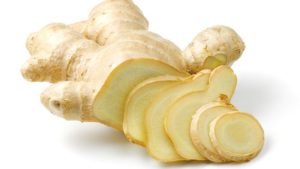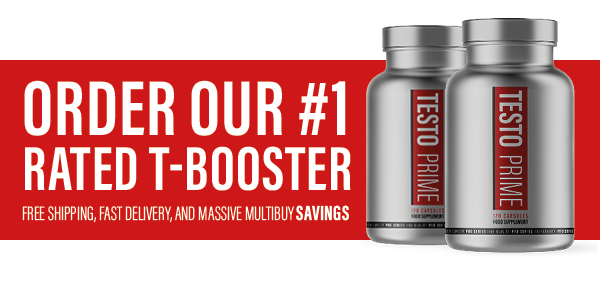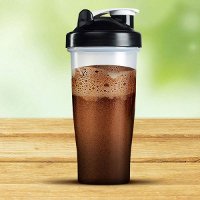Ginger (Zingiber officinale) is a flowering plant in the family Zingiberaceae whose rhizome, ginger root or simply ginger, is widely used as a spice or a folk medicine.
Ginger – the content of nutrients, vitamins and minerals
The content of nutrients, vitamins and minerals in ginger USDA – United States Department of Agriculture[1].
| Nutrient | Unit | Value per 100 g |
|---|---|---|
| Water | g | 78,89 |
| Energy | kcal | 80 |
| Energy | kJ | 333 |
| Protein | g | 1,82 |
| Total lipid (fat) | g | 0,75 |
| Ash | g | 0,77 |
| Carbohydrate, by difference | g | 17,77 |
| Fiber, total dietary | g | 2,0 |
| Sugars, total | g | 1,70 |
| Minerals | ||
| Calcium, Ca | mg | 16 |
| Iron, Fe | mg | 0,6 |
| Magnesium, Mg | mg | 43 |
| Phosphorus, P | mg | 34 |
| Potassium, K | mg | 415 |
| Sodium, Na | mg | 13 |
| Zinc, Zn | mg | 0,34 |
| Copper, Cu | mg | 0,226 |
| Manganese, Mn | mg | 0,229 |
| Selenium, Se | µg | 0,7 |
| Vitamins | ||
| Vitamin C (ascorbic acid) | mg | 5,0 |
| Vitamin B1 (Thiamin) | mg | 0,025 |
| Vitamin B2 (Riboflavin) | mg | 0,034 |
| Vitamin B3 (Niacin) | mg | 0,750 |
| Vitamin B4 (Choline) | mg | 28,8 |
| Pantothenic acid (a vitamin B5) | mg | 0,203 |
| Vitamin B6 | mg | 0,160 |
| Folic Acid (Vitamin B9, Vitamin B11, Vitamin M, folacin) | µg | 11 |
| Vitamin E (alpha-tocopherol) | mg | 0,26 |
| Vitamin K (phylloquinone) | µg | 0,1 |
| Lipids | ||
| Fatty acids, total saturated | g | 0,203 |
| Fatty acids, total monounsaturated | g | 0,154 |
| Fatty acids, total polyunsaturated | g | 0,154 |
| Amino Acids | ||
| Tryptophan | g | 0,012 |
| Threonine | g | 0,036 |
| Isoleucine | g | 0,051 |
| Leucine | g | 0,074 |
| Lysine | g | 0,057 |
| Methionine | g | 0,013 |
| Cystine | g | 0,008 |
| Phenylalanine | g | 0,045 |
| Tyrosine | g | 0,020 |
| Valine | g | 0,073 |
| Arginine | g | 0,043 |
| Histidine | g | 0,030 |
| Alanine | g | 0,031 |
| Acid asparganowy | g | 0,208 |
| Glutamic acid | g | 0,162 |
| Glycine | g | 0,043 |
| Proline | g | 0,041 |
| Serine | g | 0,045 |
References & External links
- Ginger root, raw – https://ndb.nal.usda.gov/ndb/foods/show/2969.











Comments
“Ginger – heals and promotes weight loss”